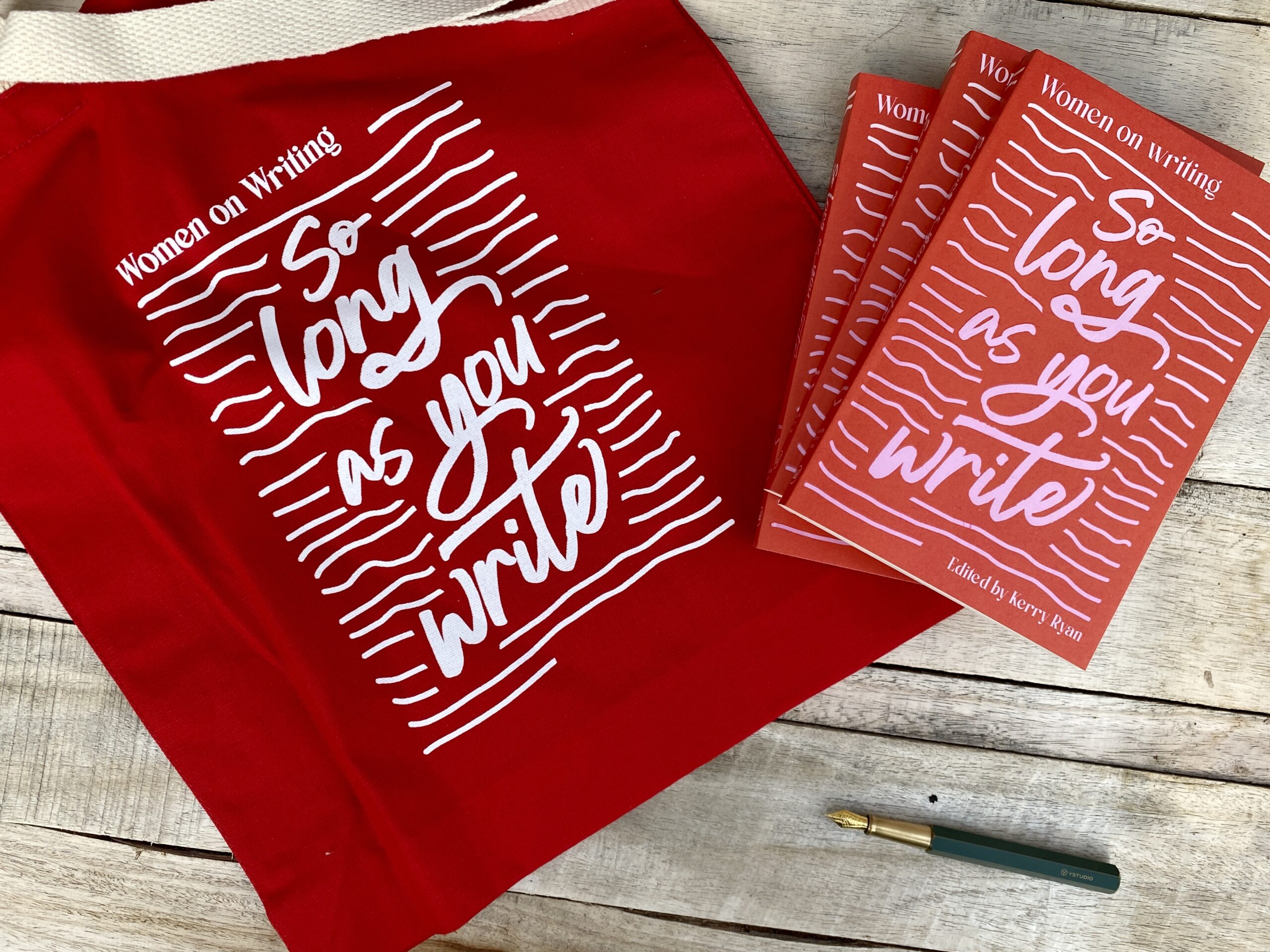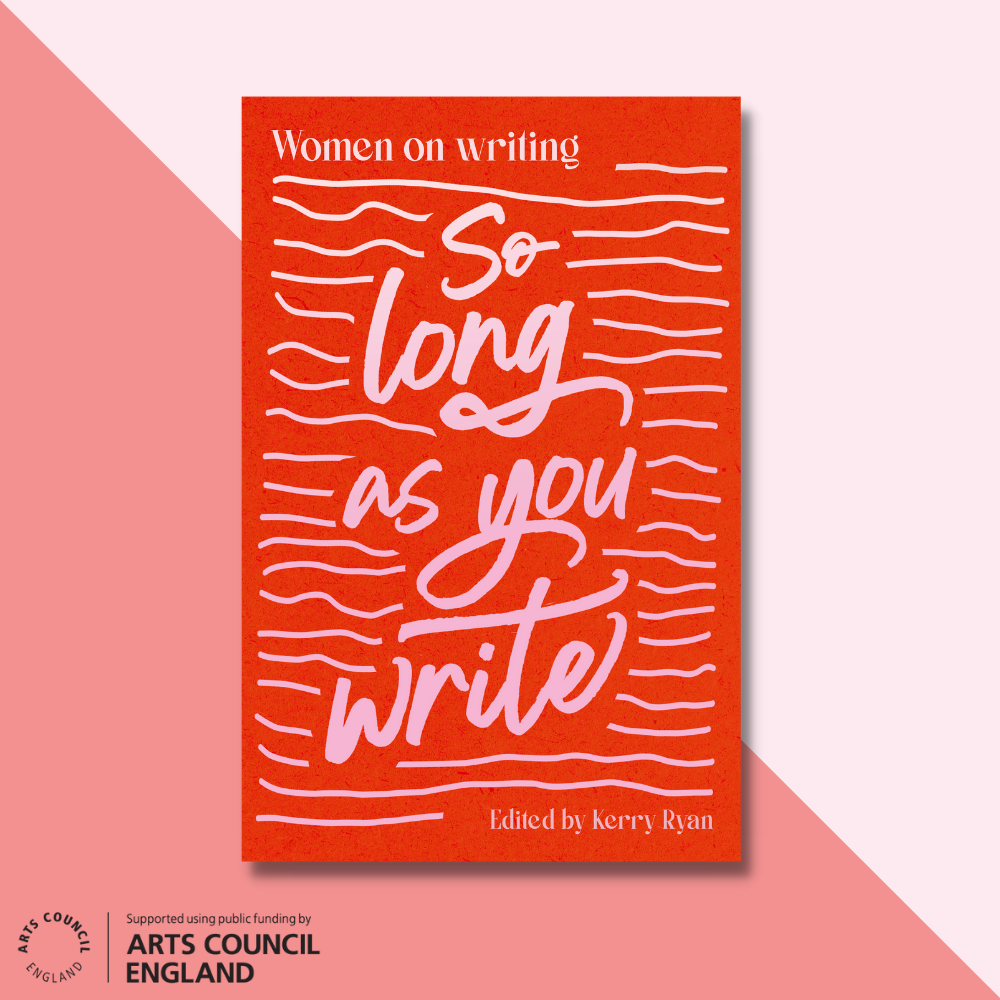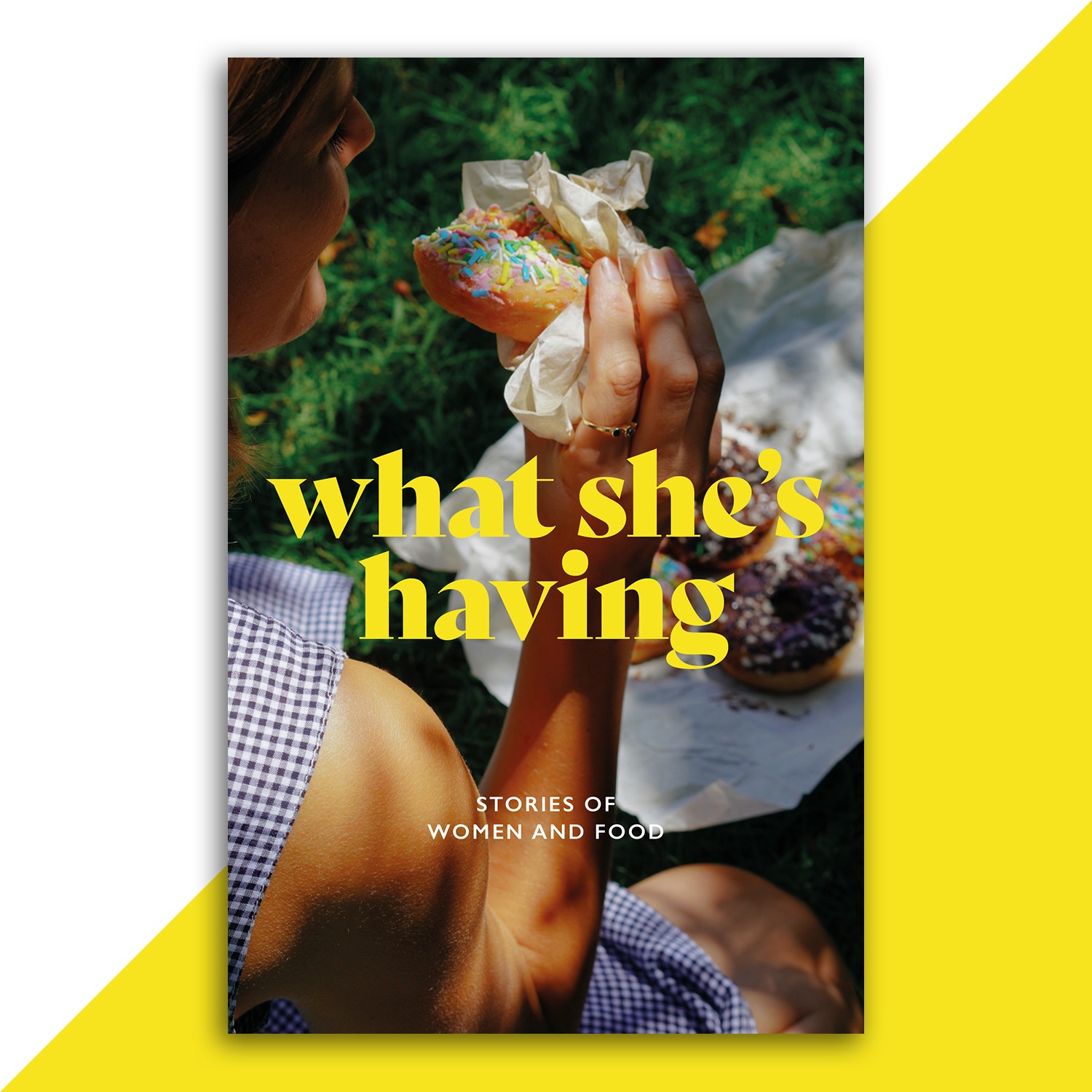Send Nudes
by Eimhear O’Toole
‘Please find attached a photo of my tits. Thanks, and best wishes!’
Not quite the exact wording, but that was the gist of the email I fired off across the sea to Amy, who was going to embroider my naked body mid-lockdown.
This was bizarre for a number of reasons.
First and foremost, I didn’t know Amy at all. She was an English artist – a talented one, whose Etsy shop contents I’d long coveted – and now she was starting a body-positive Instagram project, where she’d create embroidery based on her followers’ bellies and breasts and backsides. We’d never spoken before, let alone reached topless-photo terms.
More to the point, I don’t really ‘do’ nudes, the same way I don’t see myself ever doing sky-dives, drugs or natural childbirth: more power to you if they’re your thing, but they’re just not mine. Any suggestive photos I’d sent before had been strategically cropped, low-res things on encrypted apps. I’d certainly never Gmailed the goods to a stranger before, as though my naked torso were a grad scheme CV or a cheesecake recipe.
Mostly, it was weird because of me.
I’m not into selfies. I never maintained a Snapchat streak, even before Kylie Jenner killed the app with a blasé tweet. For self-portrait week at Art GCSE, I chanced my arm with a still-life of some strawberries and a hackneyed Arcimboldo article. I have about thirteen Instagram followers, who are mostly subjected to photos of my cat. The thought of sitting for a caricature, with passers-by rubbernecking as some facial flaw I didn’t know existed got memorialised in black marker, makes my eye twitch.
As I grew out of my arsey adolescent phase – aged about 22 – I finally capitulated to being in photos, after a childhood of hiding from people’s Fujifilm bricks and rolling my kohl-rimmed eyes at my mum’s insistence that I’d regret having been camera-shy later in life.
But even as a pro-fat acceptance, sex-positive, mid-twenties feminist, the best I could do was appreciate my body’s functionality – as though it were a machine – whilst banishing all thoughts of its appearance to a cardboard box in the loft. I was desperately, urgently grateful for everything this vessel did for me, but I was only okay with how it looked because I refused to think about how it looked. Progress? Probably not, but that was what got me through.
Then lockdown happened, and I couldn’t ignore it anymore.
*
Shortly after I landed in my parents’ house for a fortnight that turned into a year, I dutifully started to loathe my body again. Not with any real conviction, mind – more just because it was something to do: a distraction from the empty, itchy days of numb panic and icy fear.
It was partly down to habit. I was back in the same single bed where I’d spent years as a sad, sick child who’d have loved six months on a ventilator if it meant leaving ICU six stone lighter. Only this time, there was the added sting of knowing I’d built myself a new life, a thousand miles south, which had just dissolved overnight.
My body was no longer a useful thing that did loads of verbs – go, move, hug, walk, dance, kiss, sweat. All I could do now was monitor its fresh raspberry ripple stretchmarks and the spread of its hips, which were crying out to feel someone’s hands on them. To see my friends, I had to see my own face too – increasingly puffy-eyed and pale on my cracked phone screen.
Picking myself apart in the mirror felt familiar, like pressing on a fading bruise to make sure it still hurt. It was a concrete object to pour my anxieties into, which seemed less exhausting than fretting over the menacing red BREAKING NEWS banner that flashed up on all my screens with increasing regularity. In fact, it even felt easy – easier than ever before.
Growing up, I only ever saw bodies like mine as symbols of enfreakment, and gluttony. Stock photos of round stomachs, without fail, featured a pile of donuts atop a table, or a white coat-clad professional waggling a warning finger. Hips like mine were photographed exploding over waistbands; navels like mine chomped their way out of skin-tight t-shirts on the diet pages of tabloids. Now, quarantine was upping the ante. Each night, I’d listen to newsreaders intone daily death tolls equivalent to jumbo jets falling out of the sky, and in the next frame, I’d see slow-mo torsos that looked like mine lumbering down the street, overlaid with mortality rates and risk factors and percentages. I watched clips of exhausted medics tending to rows of bare bellies draped with tubes, and read about how fat bodies – never mind austerity, cuts and deliberate political incompetence – were to blame for the NHS’s floundering.
Then, there were memes. Barbie, rechristened ‘Carbie’, with a photoshopped chin and a sagging gut. Cartoon pigs bursting out of fishnets, captioned ‘Me and the girlies by the time the clubs open lol!!’ Tweets bemoaning the inevitability of rolling out of lockdown in plus-size jeans (I’d humbly counter that ending up in a body bag might be worse).
Isolation was awful, but I was also realising that unless I emerged from my quarantine chrysalis as Me 2.0 – slimmer, sleeker, better – I may as well stay hidden.
*
“My body was an object for dissection and discussion. A public health emergency. A menace to society. It had stopped feeling like mine, and I wanted it back.”
So, it was mostly out of absolute fury that I took my clothes off, barricaded my bedroom door, and started posing in the nip.
Months into lockdown, I was pissed off. Criticising myself was one thing, but hearing rich, tax-dodging Tories who, weeks before, had been gearing up to sell the health service to America pontificate about how we should save lives by eating apples and jogging was the final straw.
Now more than ever, my body was an object for dissection and discussion. A public health emergency. A menace to society. It had stopped feeling like mine, and I wanted it back.
My ‘photoshoot’ – a grandiose term for what was fifteen minutes of me hopping around in my pants, trying to beat the self-timer – ended up being oddly relaxing.
It was the antithesis of sexting: no panicked dry-shave, or messing around with soft lighting, or hoking for a perfectly matched, this-old-thing? knicker set. For the first time ever, I didn’t try and make myself look like something I wasn’t. I let my stomach droop. I let my rolls roll. I sat on the edge of my bed, and watched my thighs spread like the batter in my umpteenth tin of banana bread. I wasn’t stressing about receiving a half-hearted ‘Nice!’ in return, followed by radio silence. This wasn’t for the male gaze; it wasn’t for anyone’s gaze but mine.
It felt liberating. For about forty seconds.
Immediately afterwards, scrolling through my camera roll, I felt queasy and narcissistic. Stupid. What had made me think I was worthy of being turned into an artistic object? Was I really going to force some poor girl to sit and stare at every inch of me – the bulges, bruises, hair – in excruciating detail? What if I got an email back saying ‘Thanks, but no thanks’?
I forced myself to breathe. Amy’s previous creations weren’t like the reams of other ‘radical’, ‘#bodyposi’ art I’d seen on mugs and tote bags and candles these past few years. Those curves were acceptable ones – huge breasts and handspan waists atop smooth arses and thick thighs. Even their ‘flaws’ – delicate stretchmarks and wispy tufts of armpit hair – seemed like they’d been placed by an artistic director. Looking at them had never made me feel better: if those palatable, polished bodies were being lauded as out-there and taboo, then what on earth did that make mine?
But the subjects in Amy’s gallery had long thin legs, heavy thighs, tattoos, scars, hair, baby bumps. They had big waists, small waists, flat stomachs, rolls – and it didn’t occur to me to find any one of them less than gorgeous. I didn’t look for flaws or things to tweak, any more than I’d walk around a museum and start mentally facetuning the portraits. I just let them be.
Why couldn’t I do the same for myself?
I pressed send.
*
A few sour, sludgy weeks crawled by – the clapping’s on, the clapping’s off, daily walk, crappy Zoom connection, coffee on a wet park bench, ‘…socially-distanced-of-course!’, Normal People rewatch, too many Amazon packages – and my embroidery hoop arrived.
I didn’t look remotely thin in it. My belly was huge, hanging over the top of my M&S cotton-lycra high-legs. The rolls on my sides were rendered in thin black thread. I didn’t have a perky chest. Everything that was ‘wrong’ with my body was front and centre, laid literally bare – and it didn’t matter.
Surrounded by pink daisies, cornflower blue roses and tiny green leaves, it didn’t look like a mistake. It looked defiant, and delicate, and deliberate.
This was the first time I’d ever felt any autonomy over how my body was depicted. I was headless because I’d chosen to be – not because a voxpop editor had blurred my face out to avoid a lawsuit. My thighs rubbed together – but with no ‘Banish those hip dips by June 21st!’ headline in sight. I didn’t have the cartoon curves of a hyper-sexualised, fetish-y subcategory on a porn website; I wasn’t a thirst trap or a clunky siren call for ‘You-go-girl!’ validation. I looked soft and sensual. I looked like a piece of art. I felt like a person.
*
The past year has been, ironically, the time when we’ve had the most to appreciate about our bodies – if they’re breathing, then we’re doing pretty well. Yet there I was, viewing mine as a write-off because of aesthetics. Short-sighted and navel-gazey? For sure, but such is the power of visuality, and cultural imaging.
It’s hard to convey the importance of representation to anyone whose body has never been marginalised; anyone who’s never seen themselves reflected in a ‘before’ picture, a blind-date horror story, a ‘MY TINDER DATE CATFISHED ME’ YouTube monologue. When you have a ‘niche’ body – anything other than white, cisgendered, able-bodied and thin – your body is more than a body. It’s part of an ‘epidemic’, a debate, a crisis, a problem to be solved, a ‘five-year plan to tackle’.
I’m aware I still live in a body that’d be a lot of people’s worst nightmare – a body that’s bigger now than it was even when I took my dress off and snapped away. I’m hoping that, one day, I won’t have to think about how it looks at all. That I’ll ignore it out of fond indifference, because it genuinely doesn’t matter, and not because I’m scared of it.
But until then, I have a six-inch hoop to hold in my hands. A circle of taut fabric and thread to serve as a tangible reminder that my body (touch wood) got me through a pandemic unscathed. To remind me that it’s a soft, squashy thing that’s never done me any harm, even when everything I saw and read and listened to was telling me I should change it.
Being part of Amy’s art project taught me something I wish I’d known years ago: that all you had to do in order to become a piece of art was to decide that you wanted to be one. It really was that simple.
Now when I see my body – in the mirror, spilling out of old leggings, before I soap up in the shower – I remind myself that once, for five minutes, I decided to let myself believe that it was worth capturing, and displaying on a wall. Now when I feel bad about it, I make myself think of flowers – healthy, pink, delicate, soft, growing just as they’re meant to.




